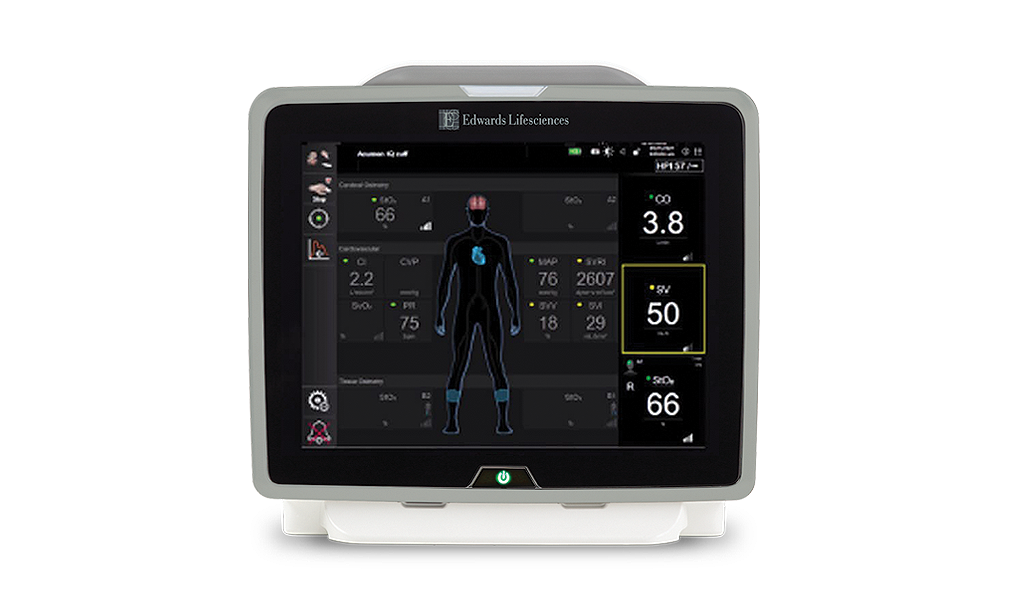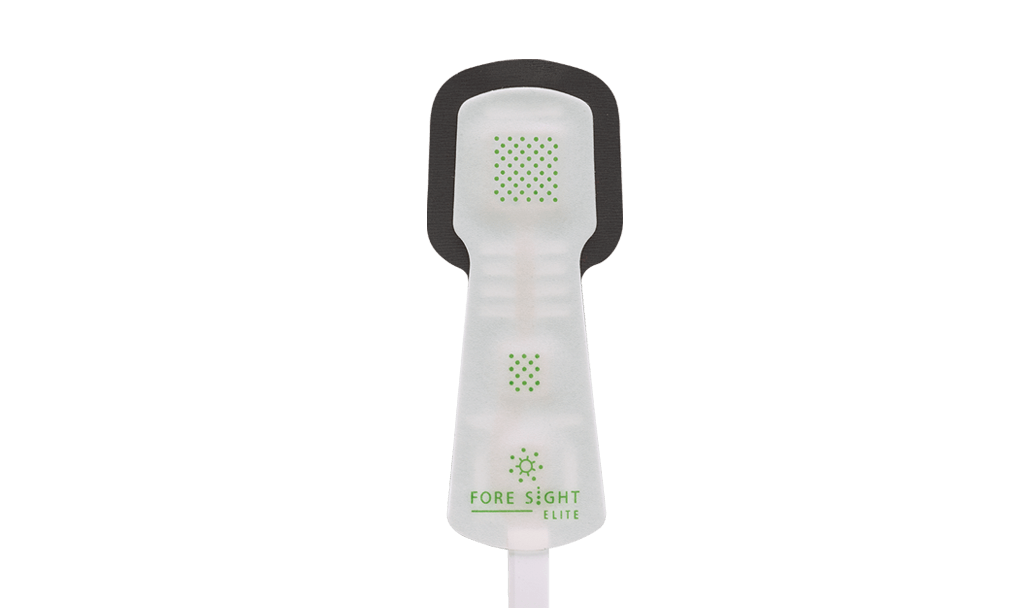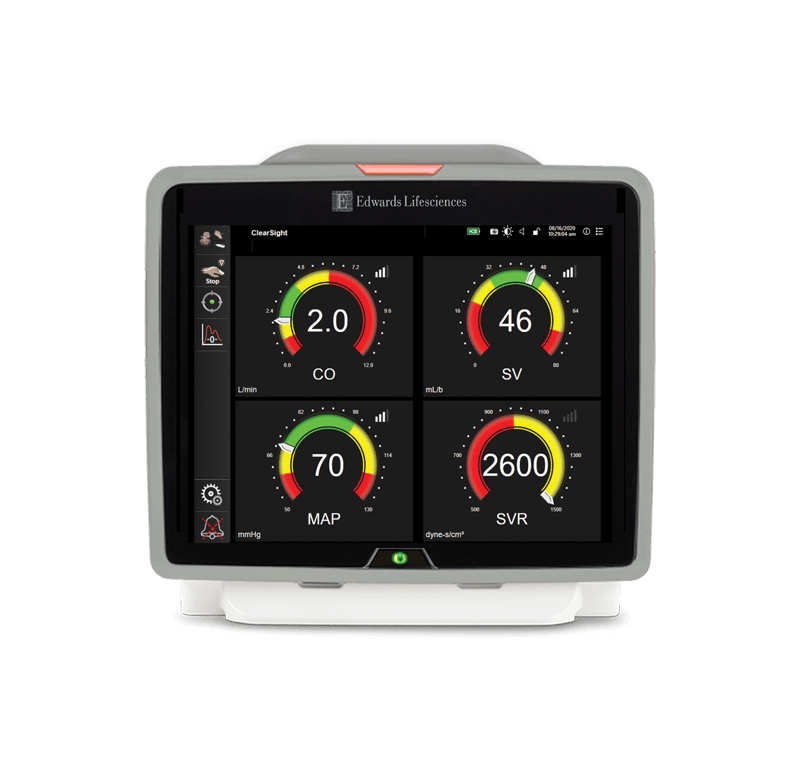- Mixed venous oxygen saturation (SvO2)
- Cardiac output (CO)
- Stroke volume (SV)
- Systemic vascular resistance (SVR)
Swan-Ganz pulmonary artery catheters
Swan-Ganz pulmonary artery catheters offer continuous parameters on three major integrated elements – flow, pressure, and oxygen delivery and consumption – for a comprehensive hemodynamic profile when used with a compatible cardiac output monitor.
Swan-Ganz catheter
Continuous view of cardiac function in your most complex patients
The first flow-directed Swan-Ganz pulmonary artery catheter revolutionized hemodynamic monitoring in critically ill patients.1 By providing a comprehensive hemodynamic profile, utilizing continuous data, Swan-Ganz pulmonary artery catheters track your patient’s hemodynamic status to assist your early evaluation.
Swan-Ganz advanced technology pulmonary artery catheters enable continuous assessment of flow, pressure, and oxygen delivery and consumption, so you have an uninterrupted view of cardiac function for proactive decisions support in your most complex patients.
Target complex patient conditions with advanced hemodynamic parameters
Swan-Ganz catheter allows continuous monitoring of the balance of oxygen delivery and consumption with these advanced hemodynamic parameters:
- Right ventricular ejection fraction (RVEF)
- Right ventricular end diastolic volume (RVEDV)
- Pulmonary artery pressure (PAP)
- Pulmonary artery occlusion pressure (PAOP)*
SvO2 mixed venous oxygen saturation
Swan-Ganz pulmonary artery catheters provide continuous monitoring of SvO2. Since SvO2 is a sensitive indicator of the patient’s status and generally precedes other indications of cardiopulmonary instability, continuous SvO2 monitoring may allow diagnostic and therapeutic decisions to be made earlier in the patient's clinical course.
Reference:
1. Chatterjee, K. Swan-Ganz Catheters: Past, Present, and Future: A Viewpoint. Circulation JAHA, 2009. 119:147-152.
*PAOP available through balloon occlusion function.
Advanced technology catheters
Edwards’ Swan-Ganz advanced technology pulmonary artery catheters offer a comprehensive hemodynamic profile delivered by a single catheter to help clinicians assess cardiovascular function and guide treatment decisions.
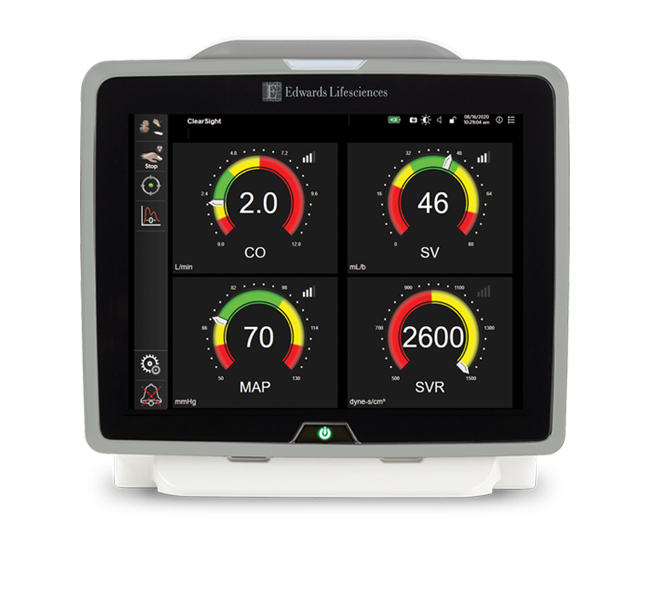
Swan-Ganz pulmonary artery catheters give you a comprehensive hemodynamic profile—delivered by a single catheter*—to guide treatment strategy. For a continuous view of cardiac function that can enable earlier intervention, choose the catheter with the parameters that best suit your clinical approach and your patient’s needs.
Swan-Ganz Advanced Technology catheters offer Continuous Cardiac Output (CCO) which continuously monitors cardiac output.
- CCO thermodilution catheters allow for continuous calculation and display of cardiac output
- HemoSphere advanced monitor uses thermal energy to calculate cardiac output using thermodilution principles
- Alternatively, cardiac output can be measured using the traditional bolus thermodilution method
*When used with a compatible monitoring platform.
Model numbers
| Model | Description | Size (F) | CCO | SvO2 | SV | SVR | RVEF | RVEDV | VIP port |
| 774F75 | Swan-Ganz CCOmbo V (CCO/SvO2/CEDV) Thermodilution | 7.5 | X | X | X | X | X | X | |
| 777F8 | Swan-Ganz CCOmbo V (CCO/SvO2/CEDV/VIP) Thermodilution | 8 | X | X | X | X | X | X | X |
Standard and pacing catheters
Swan-Ganz catheter. The clarity you need to make more informed decisions.
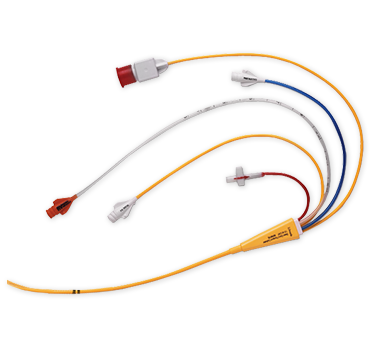
Thermodilution pulmonary artery catheters
The thermodilution catheters monitor intracardiac pressures, cardiac output, and provide infusing solutions.
When used with a compatible monitor, the following parameters are available through the thermodilution catheters: ICO, PAPs, PAOP*
- Assesses hemodynamic condition through direct intracardiac and pulmonary artery pressure monitoring, cardiac output determination and for infusing solutions†
- The distal (pulmonary artery) port also allows sampling of mixed venous blood for the assessment of oxygen transport balance and the calculation of derived parameters such as oxygen consumption, oxygen utilization coefficient, and intrapulmonary shunt fraction
- Swan-Ganz VIP catheters have an extra lumen with proximal port (30 cm) for infusion in addition to the standard distal and injectate lumens to provide direct access to the right atrium
- Swan-Ganz VIP+ catheter has a right ventricular lumen that terminates 19 cm from the catheter tip and the right atrial lumen at 31 cm
Model numbers
| Model | Description | Size (F) | Length (cm) |
| 132F5 | Four Lumen Catheter | 5 | 78 |
| 096F6P | Four Lumen Catheter | 6 | 110 |
| 131F7P | Standard Four Lumen Catheter | 7 | 110 |
| 831F75 | VIP Five Lumen Catheter | 7.5 | 110 |
* PAOP available through balloon occlusion function.
† When used with a compatible monitoring platform.
‡ When used with an external pacemaker.
§ When used with an external pacemaker and used with the appropriate Edwards Chandler Transluminal A and/or V pacing probes.
Thermodilution is abbreviated as TD.
Clinical evidence
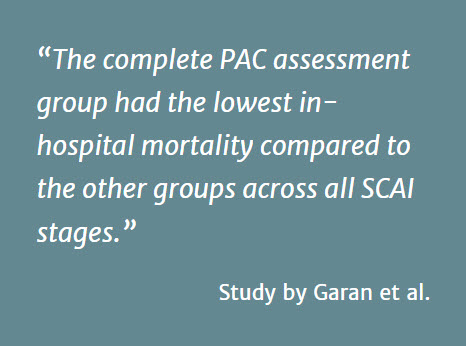
Complete Hemodynamic Profiling with Pulmonary Artery Catheters in Cardiogenic Shock Is Associated with Lower In-Hospital Mortality
The objective of the study, directed by Garan et al., explored the potential benefit of obtaining a complete hemodynamic profile via pulmonary artery catheters (PAC) prior to administration of mechanical circulatory support (MCS) in cardiogenic shock (CS) patients. The study observed that CS patients with complete PAC data obtained prior to MCS had improved survival compared to those who did not.
Further, the study showed that an incomplete hemodynamic dataset was equivalent to having no PAC data with regard to in-hospital mortality. Additional benefits from complete PAC data acquisition include early identification of hemodynamic compromise requiring immediate MCS, in order to avoid potentially irreversible end-organ dysfunction as a result of treatment delays.
- Lower mortality in patients with advanced stages of CS
- Lowest in-hospital mortality across study sub-groups and SCAI stages
- Early identification of hemodynamic compromise
- An incomplete hemodynamic dataset is equivalent to having no PAC data

Pulmonary Artery Catheter Use in Adult Patients Undergoing Cardiac Surgery: a retrospective, cohort study
In this retrospective study conducted by Shaw et al., the utility of pulmonary artery catheters (PAC) in complex cardiac surgeries, and their association with subsequent clinical outcomes including 30-day in-hospital mortality, major morbidity, and length of stay was examined.
The analysis comprised two cohorts totaling 6844 patients who underwent CABG, isolated valve surgery, aortic surgery and other complex procedures from January 1, 2011 to June 30, 2015. The study concluded PAC use did not contribute to in-hospital mortality and could be associated with a statistically significant decrease in length of hospital stay and a significant decrease in the cardiopulmonary morbidity composite.
- Decreased LOS
- Decreased pulmonary morbidity
- No increased risk of in-hospital mortality
Accessories

CO-Set+ closed injectate delivery system works effectively with room temperature or cold injectate for the measurement of bolus thermodilution cardiac output when used with a compatible monitoring platform and Swan-Ganz catheter.
- In-line temperature probe is directly in the injectate fluid path
- Innovative contamination shield is integrated into the reinforced plunger to help close the system
- Volume-limited syringe (10cc) aids in obtaining reproducible cardiac output by simplifying filling and eliminating the variability from differences in filling techniques
- The syringe plunger and the finger grips on the syringe jacket have been designed to help accommodate a wide range of user hand sizes for efficient and comfortable injection of fluid
Model Numbers
| Model | Description |
| 93600 | Cold Injectate System |
| 93610 | Room Temperature Injectate System |

